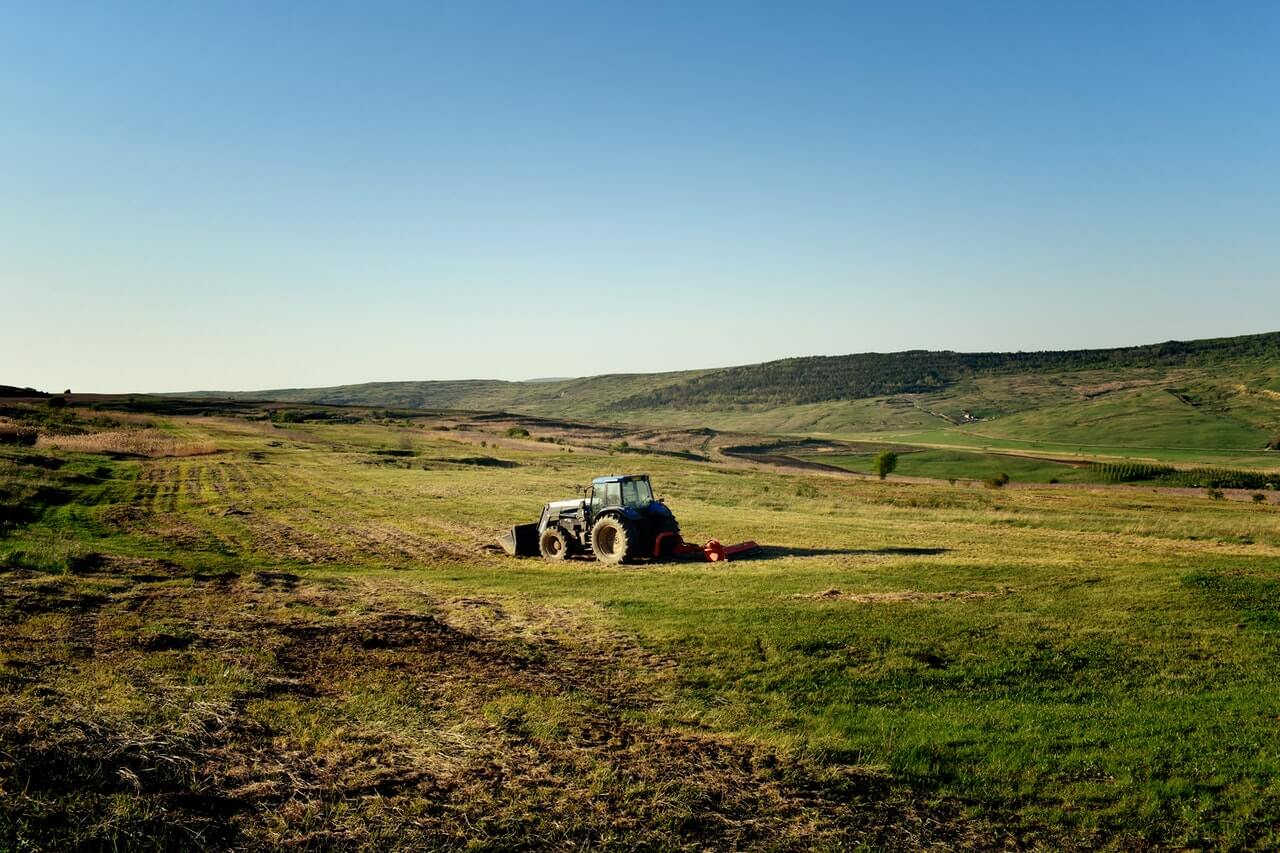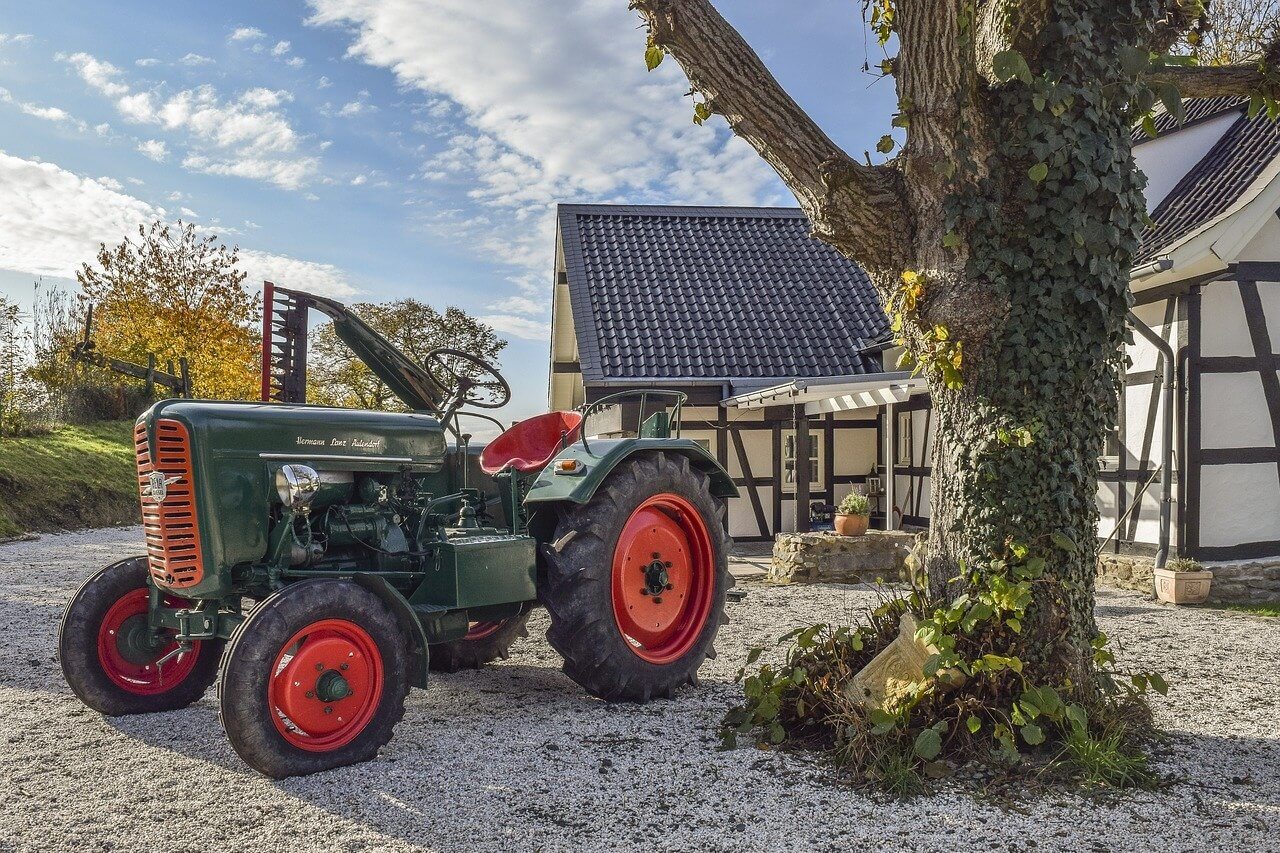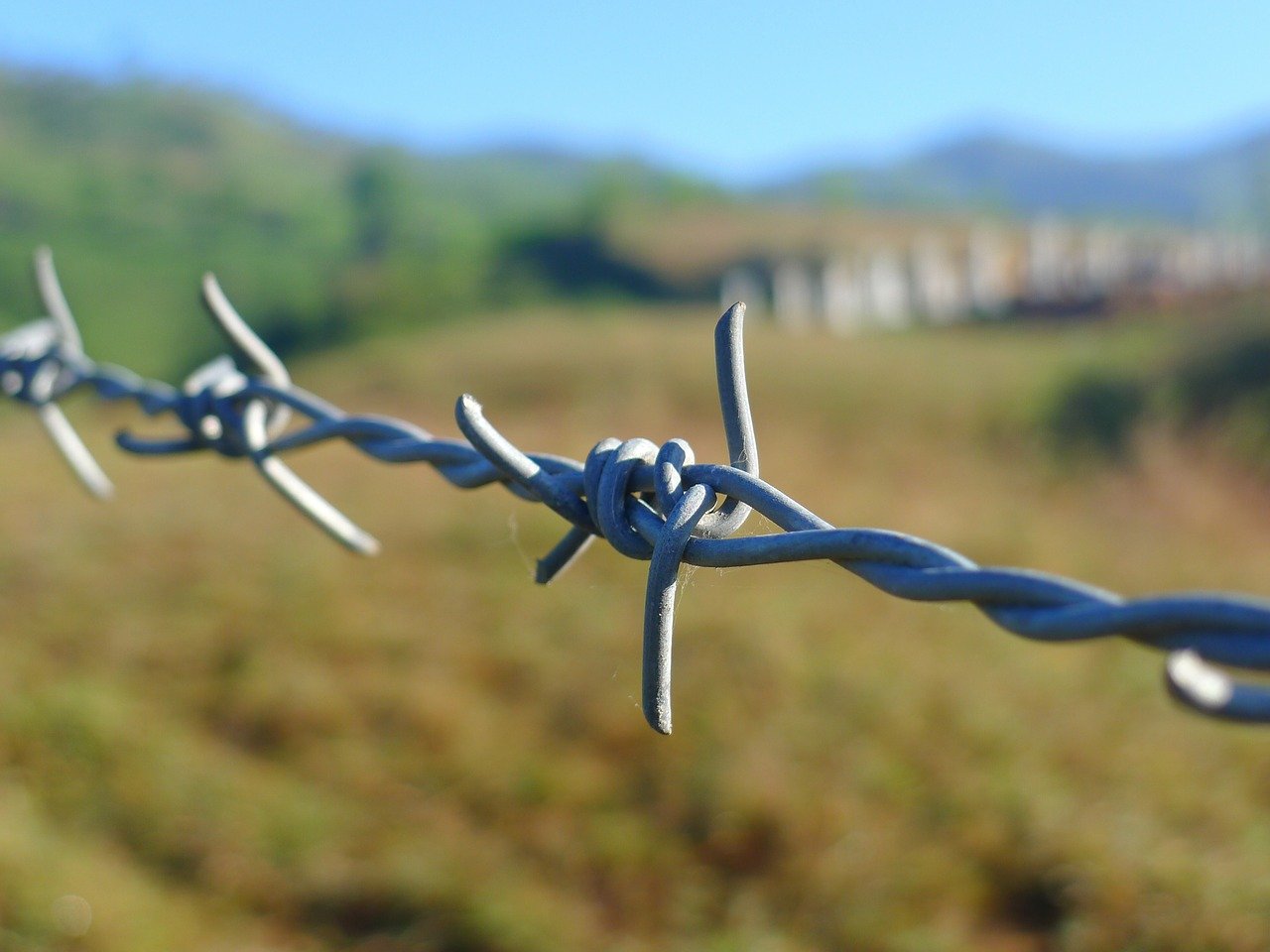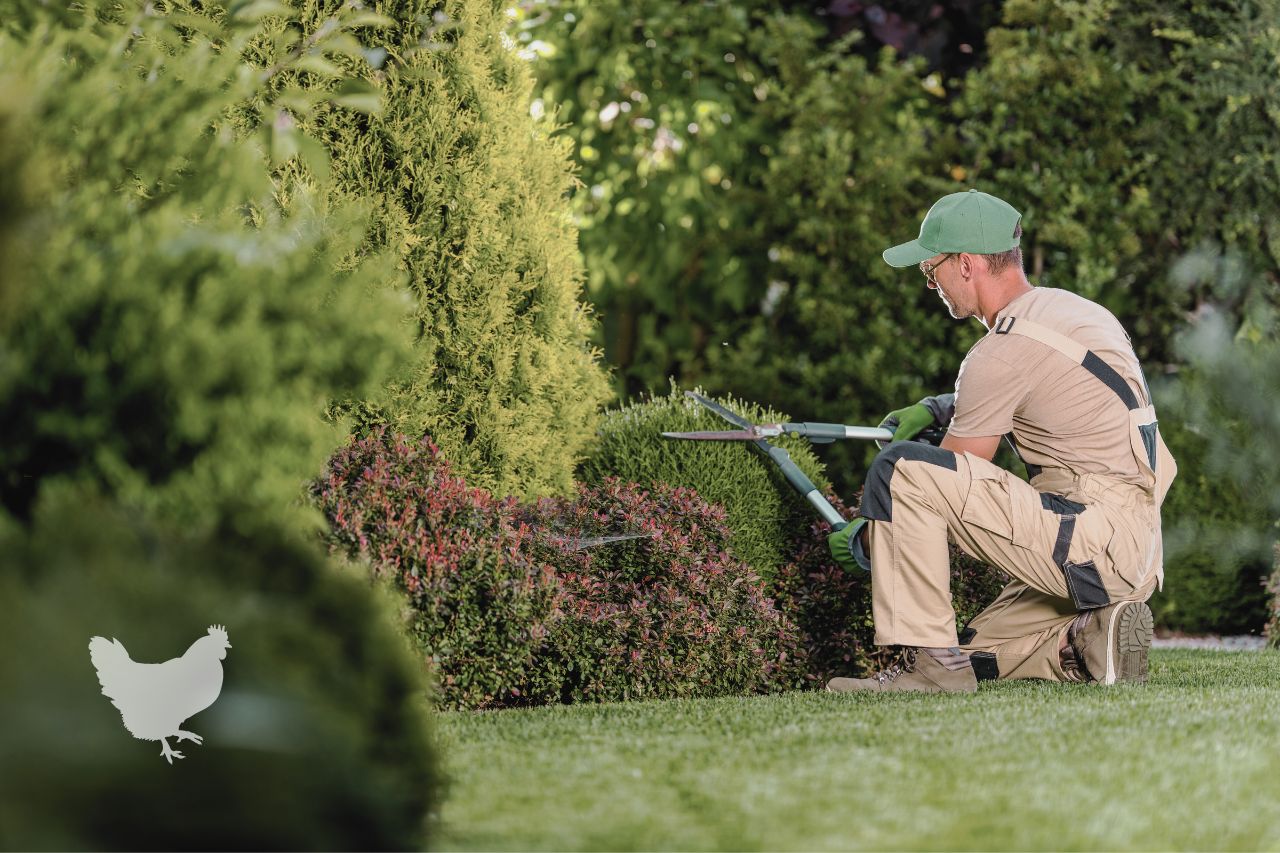Smart farming is a combination of continuously planning ahead and continuously working hard in the here-and-now. In order to do both effectively, it’s important that you establish an efficient daily routine to keep your farm maintained as you forward with improvements. In this article, we discuss six smart strategies to help you manage your farm. Read on to learn more on how to maintain a farm.
What You'll Learn Today
1. Protect And Enrich Your Planting Areas

To keep your planting areas weed free and ready for planting during the off season, it’s a good idea to plant a cover crop.
Cover crops are sometimes referred to as “green manure” because they enrich the soil while acting to suppress weed growth and discourage pests. Additionally, growing a healthy cover crop will help keep some plant diseases at bay.
Some good examples of cover crops include alfalfa, soybeans and clover. All of these work hard to enrich the soil with nitrogen.
When you till them under before planting your money crop, they do double duty by composting in the soil and enriching it even further.
Another plant that is often used as a cover crop is ryegrass. If you’re going to use winter rye as a cover crop, remember that you can plant it anytime until the first winter frost.
Be sure to mow it before it sets seed because you don’t want it to come back on its own.
After tilling your cover crop under, you should wait 14 to 21 days before planting your crop. This gives the vegetation a chance to begin composting.
2. Create And Follow A Machine Maintenance Schedule

In addition to planning your crop planting wisely, you also want to be sure to schedule and perform regular maintenance on your farm equipment.
Before the planting season even starts, you should thoroughly inspect all of your farm equipment looking for signs of wear in the:
- Belts
- Chains
- Hoses
… and moving parts in general. Replace any worn parts. This will save you time once you begin work because you won’t need to stop and replace broken parts.
Check for loose fasteners because, if left unattended, they will damage threaded parts, brushings and linkages.
If you see worn screws and/or clamps, you should replace them. Screws that are simply loose should naturally be tightened. These simple steps will save you time and money in the long run.
Inspect wheel bearings and the tires to be sure that the bearings are properly lubricated and the tires are in good condition and well inflated.
Inspect your battery and clean off any corrosion. Test battery strength. If necessary, replace the battery.
Do a safety inspection on all your equipment to be sure that your signals, headlights, hazard lights and running lights are all working properly.
Be sure that all of your equipment is properly supplied with fire extinguishers.
Check the engine coolant and all other fluids. Top them off or change them as needed.
TIP: Look at the floor of the storage building where your equipment has been stored through the winter. If you see puddles, you know you have leaks!
Whenever you fuel up throughout the harvest season, be sure to check oil, lubricants and other fluids. Top them off as needed.
Always take this opportunity to have a look at the hoses, filters and belts, and replace them when you need to.
Keep an eye out for exposed wiring that may need to be repaired or replaced. You may need a good farm jack to look underneath your larger vehicles.
Before storing your equipment away at the end of the harvest season, take the time to wash off all the debris and dirt that has collected.
This will help prevent rusting during the winter months. It’s a good idea to apply a coat of rust inhibitor before storage.
In addition to your own inspections, make an appointment with your local implement dealership to perform an annual maintenance inspection.
This is professional service may seem to be costly, but it will save you lots of money in the long run.
3. Mend Your Fences

Good fences make good neighbors, so you’ll want to be sure that you know where your property lines are and that you have your property lines well fenced.
Farm security and safety are as important as the other farming/livestock/crops considerations.
If you’re not able to fence your entire property with a sturdy fence line now, you should at least mark it off so that you don’t have unseemly disputes with your neighbors.
In addition to boundary fencing, you should also have good sturdy fences around all your livestock to prevent them from running loose, getting hurt and annoying your neighbors and their livestock.
Don’t count on electric fencing to keep large livestock in. Electric fence is a good addition to a large livestock fence, but it can’t be counted on by itself. Electric fence mesh is effective for keeping poultry contained.
No matter what kind of fences you have, survey them daily and check them for damage/malfunction.
Make repairs promptly to prevent problems and losses. A portable stick welder may be a good investment for quick repairs.
4. Keep Your Houses In Order

Just as you inspect and repair your fences frequently and promptly, you should also inspect and repair your home, barns and any other outbuildings. You should also maintain your roads and driveways.
It’s a good idea to take care of repairs immediately when you see them. Doing so can help keep your repairs at a minimum and prevents small damage from spiraling into large damage.
Check for any trees that are in danger of falling over in wind and cut them down if they may represent a risk. Here’s our selection of good chainsaws for farm use.
Check for any large, heavy rocks that you may want to move out of the sight of your animals.
Additionally, problems such as loose nails can cause livestock injury. This means vet bills and lost time. You can use a metal detector to check if there are any metal objects in areas where you have your animals.
5. Stay On Top Of Your Daily Routine
In addition to large maintenance chores, farm life involves lots of medium (e.g. cleaning farm ponds, dealing with your excess wood problems, etc) and small, daily chores that must be regularly attended to. This video provides a good example of the sorts of tasks you can expect to perform daily.
Life On A Farm – Our Daily Homestead Routine
If you have a family, delegating these chores can be an excellent way to make sure they all get done in a timely manner!
6. Review And Update Your Objectives And Goals
If you’re smart, when you decided to take up farming you also created a farm plan. This is the sort of plan you put together to determine where you want to be in a few months, next year, in a few years and in the next decade.
A farm plan is not a static document. Just as with all other aspects of life as time passes, circumstances change. Today you may have more or less to work with than you did at the outset.
Review your farm plan about once a month and make adjustments to be certain that you are still headed in the right direction and staying firmly on the right track.
Frequently Asked Questions

Why Is Farm Maintenance So Important?
Proper farm maintenance is essential to keeping your farm functioning safely and efficiently. If you don’t maintain your land and equipment, you will most likely find yourself facing costly repairs and dealing with loss of useful property.
Since farm maintenance includes tasks such as reducing soil erosion and caring for livestock, proper farm maintenance practices can help you avoid pests and diseases while ensuring you keep plantable areas of your property in top shape for upcoming crops.
What Are Some Common Farm Challenges?
There are many challenges you may face on a farm. These can include soil erosion, climate change, and struggling to earn a livable income while investing in the upkeep of the farm.
Other challenges may include the unpredictability of crop price fluctuations, maintaining a clean water supply, and dealing with pests and diseases. Many of these challenges can be managed with proper farm maintenance, but they cannot be eliminated altogether.
How Do I Deal With Pests and Diseases?
Pests and diseases can affect any farm, and it’s important to manage these issues to keep them from getting out of hand. Always monitor your animals and crops, inspecting for discoloration, signs of illness, and other indicators of infection.
Keep your farm clean, and sanitize any area you think may be affected by disease or pests. Regularly clean animal stalls and pens, rotate your crops regularly, and use biological controls (such as beneficial insects) to control pests and diseases.
Do I Need to Maintain My Farm Equipment?
Maintaining farm equipment is every bit as important as maintaining your farm overall. Farms rely on these pieces of equipment to make a variety of tasks easier; without them, you would have to perform all tasks by hand.
Maintaining your farm equipment ensures that it stays in good working order and helps it last longer. In turn, this will save you time, money, and hassle in the long run.
How Can a Farm Be Sustainable?
Using sustainable farming practices is essential for the long-term success of your farm, as well as for preserving the planet.
Sustainable farming practices include avoiding the use of harsh chemicals, fertilizers, and pesticides; allowing your farm animals and livestock plenty of time and space to graze; and using natural techniques such as composting and crop rotation to get the most out of your farming operation.
I do agree that set up a farm is simple. Maintaining it is much more difficult.
Really appreciate your advice thank you.